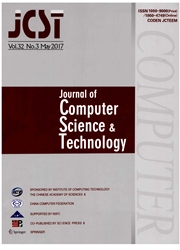

 中文摘要:
中文摘要:
路由器体系结构在力量之上基于(提交并且控制元素分离) ,它被 IETF 力量工作组正在标准化,在灵活性,可编程性,和划算在传统的路由器体系结构上获得它的竞争优势。在这篇论文,一个基于力量的路由器(ForTER ) 的设计和实现被说明。第一, ForTER 的实现建筑学被讨论。然后,一个分层的软件模型,很好说明力量特征,被建议。在 ForTER 基于控制元素(CE ) 和提交的元素(FE ) 的模型,设计和实现详细被介绍。而且,为 ForTER 的安全被考虑,阻止 DOS 攻击的一个算法被介绍。最后, ForTER 的实验为路由和运行路由选择协议被说明,网络管理, DOS 攻击预防,等等。试验性的结果显示出 ForTER 设计的可行性。因而, ForTER 实现基本上证明力量建筑学和一些 IETF 力量说明的可行性。这篇文章的联机版本(做 i:10.1007/s11390-008-9181-4 ) 包含增补材料,它对授权用户可得到。
 英文摘要:
英文摘要:
A router architecture based upon ForCES (Forwarding and Control Element Separation), which is being standardized by IETF ForCES working group, gains its competitive advantage over traditional router architectures in flexibility, programmability, and cost-effectiveness. In this paper, design and implementation of a ForCES-based router (ForTER) is illustrated. Firstly, the implementation architecture of ForTER is discussed. Then, a layered software model, which well illustrates ForCES features, is proposed. Based on the model, design and implementation of Control Element (CE) and Forwarding Element (FE) in ForTER are introduced in detail. Moreover, security for ForTER is considered and an algorithm to prevent DoS attacks is presented. Lastly, experiments of ForTER are illustrated for routing and running routing protocols, network management, DoS attack prevention, etc. The experimental results show the feasibility of the ForTER design. Consequently, the ForTER implementation basically testifies the feasibility of ForCES architecture and some IETF ForCES specifications.
 同期刊论文项目
同期刊论文项目
 同项目期刊论文
同项目期刊论文
 期刊信息
期刊信息
